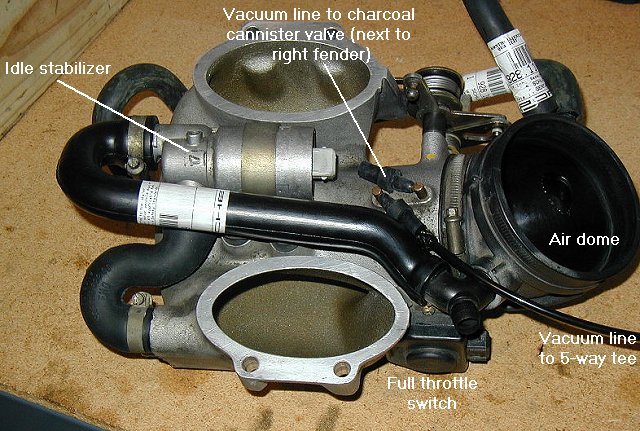The clearest illustration is on page 24-216 in the shop manual. There is a fitting in the side of the large tube that connects the MAF sensor to the throttle body. Air that flows from this fitting thus has passed thru the MAF sensor (and is "measured air"), but has not passed thru the throttle (and is not "controlled air"). There is a Tee in the air hose attached to this fitting. One leg of the Tee runs to the inlet side of the idle actuator, furnishing the bypass air to control the idle speed. The other leg of the Tee runs to the vacuum ejector, the slant-Tee vacuum fitting located on the right side of the intake, near the throttle cable quadrant.
(This fitting is a vacuum booster, utilizing air flow from the Tee and large inlet tube into the intake manifold to furnish boosted vacuum to the vacuum brake booster.)
There are three lines on this slant-Tee fitting. One runs to the vacuum brake booster; one runs to the intake manifold plenum; and one runs under the manifold. If you disconnect the input tube (the one that runs under the manifold to the Tee) and block the opening in the fitting, then spray a solvent, such as WD40, into the tube running under the manifold, the air flow into the idle actuator will carry some of the solvent into the valve section of the actuator, where it may or may not remove some of the crud and reduce the sticking.
If you are desperate enough, you can pull the air filter housing and MAF sensor off, clamp the inlet hose shut at the slant-Tee, and spray solvent into the fitting in the large inlet tube with the engine idling. This will get a heavier dosage of solvent to the idle actuator valve mechanism.


